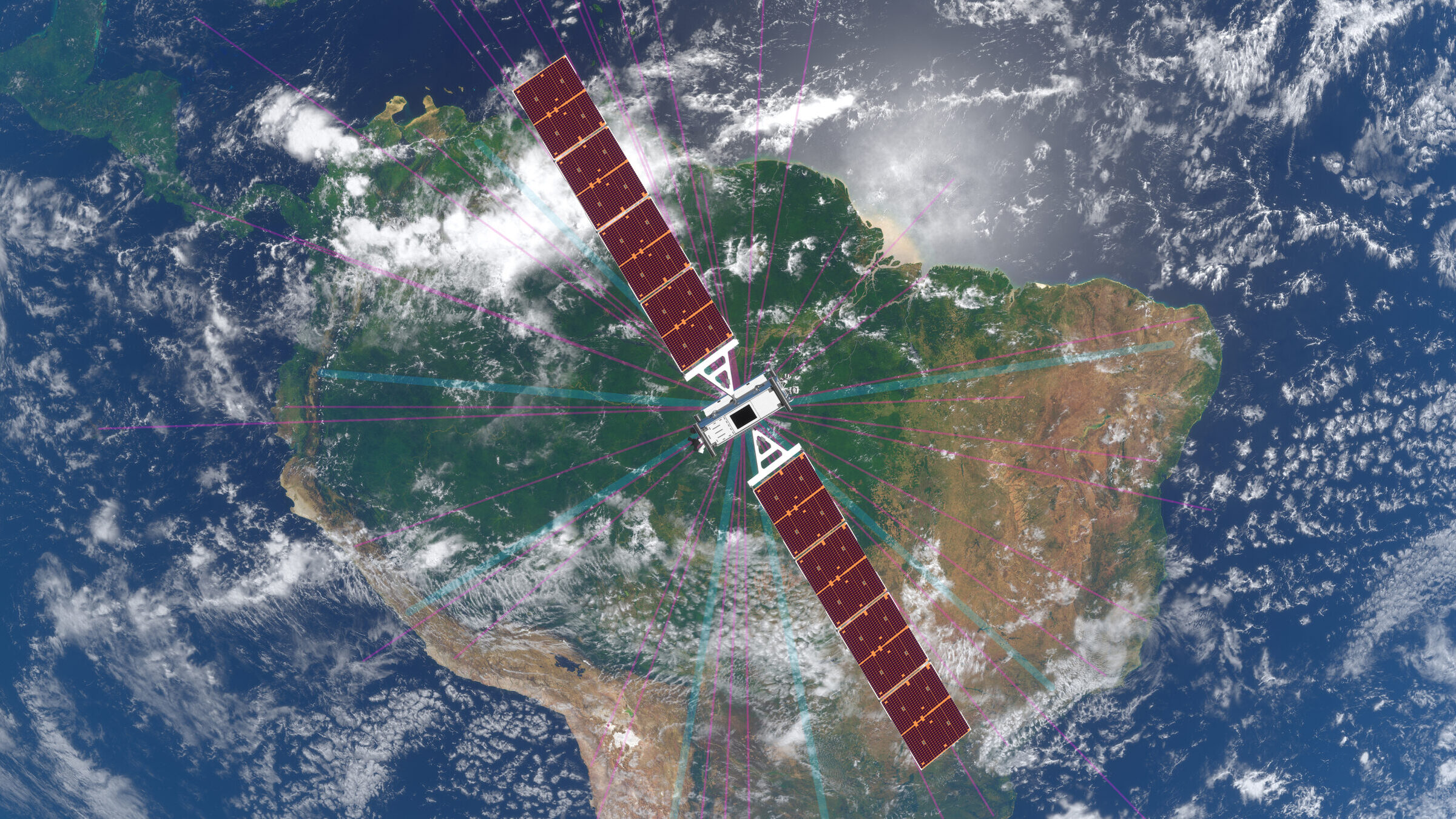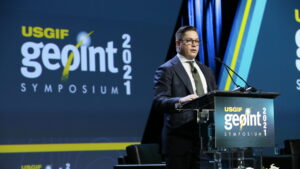
O3b mPower satellite over the US. (SES graphic)
GEOINT 2021: Improving collaboration with commercial industry and academia has become a central focus of Intelligence Community efforts to advance US geospatial intelligence (GEOINT) capabilities across the board — from ensuring access to position, navigation and timing capability to 3D terrain mapping to AI tools for analysts — according to top IC research managers.
“We recognize that a lot of our industry partners, academia, and other technology developers have expertise that can help us in our mission, and augment the IC’s ability to field cutting edge capabilities,” John Beieler, director of science and technology at the Office of the Director of National Intelligence (ODNI) said here Tuesday.
Beieler told an audience gathered for GEOINT 2021, sponsored each year by the United States Geospatial Intelligence Foundation (USGIF), that to that end, ODNI is working on providing outside partners with declassified explanations of the office’s science and technology priorities, which the office has developed recently at the classified level.
“These are the IC’s S&T Strategic Plan, the Strategic Investment Landscape, and the Investment Framework,” he said. “The goal of these documents is to communicate needs to our IC partners as they fill out their budgets, along with, basically, all of you, to make sure that we can meet the challenges on the horizon, and over the horizon.”

John Beieler, ODNI director of science and technology. (USGIF staff/handout)
“What we need from the community is to help us with our problems, and with what are particularly large problems and large challenges. So, we need for everyone to talk to us,” echoed Cindy Daniell, head of research for the National Geospatial-Intelligence Agency (NGA) in her keynote address Tuesday. “We’re trying to make that easier. We’re trying to make the communication channel more open and more transparent. We’re trying to have everybody understand our problems, trying to explain in such a way that will make it easier for non-traditional performers to be able to respond.”
Daniell noted with a laugh that the biggest challenges for NGA were “everything.” The agency, she explained, has broken down its research portfolio into three major areas that form the basis of NGA’s Boosting Innovative GEOINT Research Broad Agency Announcement (NGA BIG-R BAA). The BAA was last updated Aug. 4 and will remain open for scientists, academics and small innovative companies to pitch prototyping projects through July 2023. Those three areas are:
- Foundational GEOINT. According to the BAA, this primarily involves the physical sciences used to study the Earth. Daniell mentioned assured PNT, but the BAA notes a wide range of areas of interest from gravitational and magnetic models to maritime environment mapping to “human geography and environmental models.”
- Advanced Phenomenologies. This includes, Daniell said, “all of the different sensors that we need to be aware of and we need to be able to access, and we need to be able to use them in ways they were not intended to be used.” According to the BAA, some key interests are space situational awareness and “multi-domain data aggregation.”
- Analytic Technologies. The BAA explains this area of research is aimed at “leveraging new sources of data and developing novel analytic techniques to deliver a geospatial dimension to multi-INT analytics, in particular to address emerging threats and mission domains.” Examples include “derivation of GEOINT from non-traditional data in cyberspace” and “immersive GEOINT visualization tools.”
Daniell explained that the BAA uses Other Transaction Authority (OTA) for contracting with small firms to provide more agility in moving forward with prototypes, as well as grants for academic institutions.
Beieler said that ODNI also is now exploring the use of OTAs, as well as Cooperative Research and Development Agreements (CRADAs, which involve no monetary exchange) to help speed the office’s ability to integrate novel technology generated by outside partners.
While the use of these sorts of contracting vehicles that allow managers and suppliers to avoid the complications inherent in the Federal Acquisition Regulation (FAR) is common in DoD, one official here explained that the IC has up to now been leery of taking that route..
“We need the government to embrace innovation, so that it’s not only a better customer, but a true partner with industry and academia,” Beieler said.






















